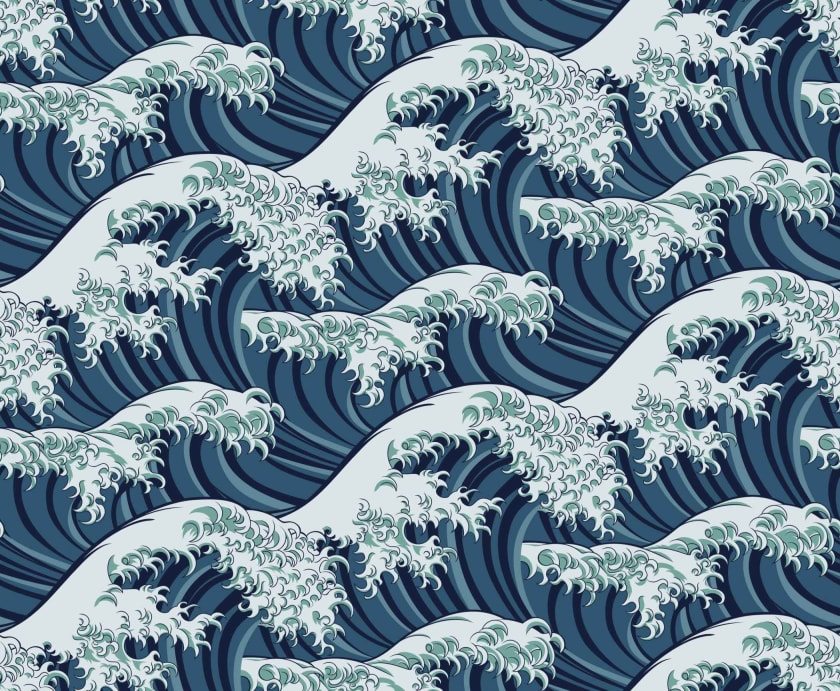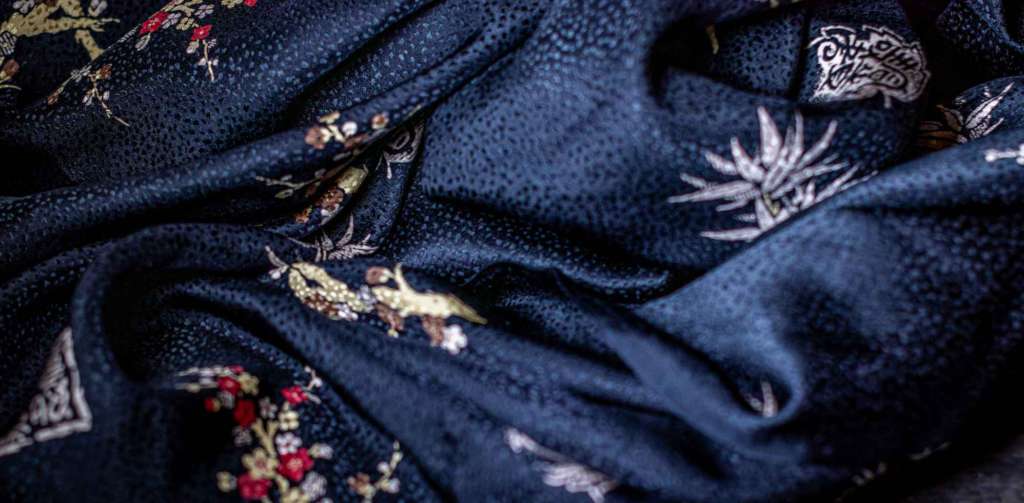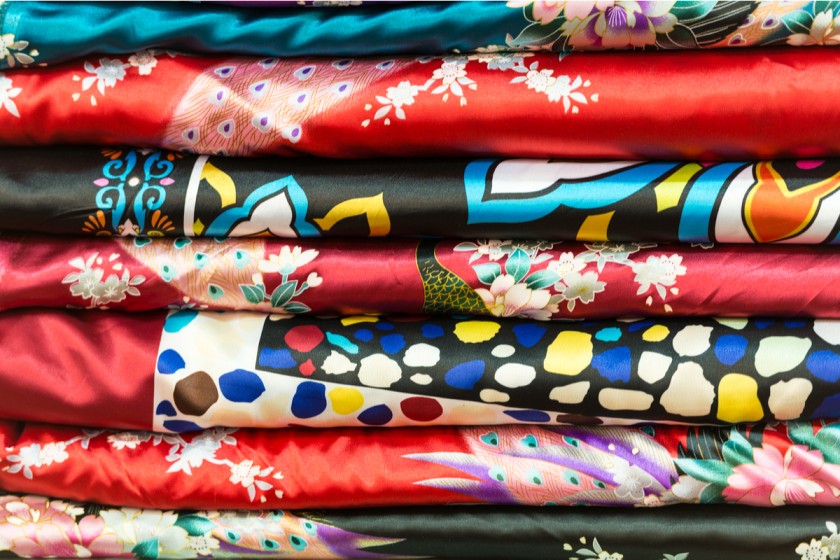Japanese Fabric: Rise In Demand and Ways To Source



Japanese Fabric – Steeped in History
What is the first thing that pops into mind when one hears the words “Japanese fabric”? The chances are high that these words symbolize the silk kimono, which has become synonymous with Japan’s traditional dressing. While it is definitely one of the prominent and typical dresses from the country, Japanese textile is much more than just silk kimonos!
The variety of fabrics comes from the materials they use – silk, cotton, hemp, linen, etc. – as well as the different methods of dying and patterns give Japanese fabric the international recognition it gets.
The history behind each of these fabrics has shaped the material and its use. The weaves of Japanese fabric include plain weave, satin weave, twill weave, Damask, and patterned weaves that appear similar to brocade.
Everyone Loves Japanese Fabrics
Some of the most popular Japanese fabrics that are being used globally by designers are listed here.
Kasuri
It is probably the most popular Japanese fabric. The Kasuri is made with an ikat technique, perfected in Japan. Like most other Japanese fabrics, people dye these fabrics in indigo, which has a substantial historical and cultural significance in the country.
The identification of the Kasuri fabric is the carefully weaved geometric patterns and images. Weavers design these patterns by bundling the threads together in a planned manner during weaving. The weaving process opens up the design, and thus, one cannot easily replicate the designs.
Japanese silk

A pervasive fabric with a long history in Japan, these silks are generally batch dried with resist dyeing patterns instead of weaving in the patterns. Historically, this material was only for use by the aristocrats and upper classes. This fabric is still in use, and it gives a rich look to the design. Further, designers generally embellish these fabrics via embroidered patterns.
Noragi
One cannot complete any discussion about Japanese Fabric without mentioning Noragi. The traditional farmers’ clothes, made by their wives at home by spinning cotton fabrics, have a great cultural significance in Japan.
The most common types of Noragi garments have been vests, jackets, and farming pants. Designers now use this fabric to add patterns to their designs, with a nod to its humble beginnings.
Sashiko
Driven by the necessity of protecting their loved ones against the harsh winters and limited availability of cotton materials, the Japanese women pioneered the Sashiko technique of hand sewing fabric.
The method includes sewing together different patches of cotton or hemp cloth in layers. The multiple layers protected against the cold and the availability of patches makes each design unique.
Zanshi
Another excellent example of making the best available resources is the Zanshi stitching with leftover threads from a loom. These threads may not be sufficient for independent use in a new fabric, but stitched together, they create a different type of fabric with individual designs.
Sakiori
A great example of the ingenuity of Japanese women, this weaving pattern involves scraps of available material woven together at home. The word's literal translation is “saki” – tearing or ripping and “ori” – weaving.
The torn pieces left from other dresses are woven width wise, with a cotton thread making up the weft. One can use the unique colorful fabric for different items – from dresses and table covers to curtains and wall hangings.
Rising Demand of Japanese Fabric

As the Western world started taking notice of the beauty and utility of the Japanese fabrics with their long life, the demand for them increased worldwide. There was further acceleration of this fact by prominent Japanese designers like Yohji Yamamoto, Issey Miyake, Kenzo Takada, and Hiroshi Fujiwara showcasing their collections in global Fashion Weeks.
The simplistic beauty of traditional Japanese fabric and individualistic designs gives designers an incredible opportunity to use them in their collections. These are ideal materials to work with, whether giving the nod to these fabrics or expressing one’s individualistic sensibilities.
With streetwear from Tokyo Fashion Week gaining popularity across the world, there is a rising demand for Japanese fabric. Fashion lovers worldwide and the designers keep an eye on the unique designs showcased during this week. They provide great inspiration as well as a clear indication of what the working population prefers.
Another critical facet of Japanese fabric is the sustainable methods of producing them. Traditionally developed to make the best use of available resources, these fabrics are a great example of sustainable fashion.
In an industry that is increasingly under the scanner for the waste it produces, Japanese fabrics stand out with their concept of reusing the fabric and extending its life. This aspect is a big reason, Japanese fabrics are becoming the material of choice for many designers across the globe.
How to source the best Japanese Fabric?

It is definitely tempting to use one or another type of Japanese fabric in a collection. Their sheer variety in patterns, color, texture, and appeal for a mass audience make them an excellent choice for any designer.
But how does one find the best quality Japanese Fabric?
After all, once included as part of the next collection, an uninterrupted supply is a must. Here are a few pointers for sourcing the most authentic Japanese Fabric and being assured of quality.
- Industry trade shows
This source is a given for anything in the fashion industry, and Japanese Fabric is no exception. All global trade shows, including those around the Fashion Weeks, have parallel industry shows for the supplies.
While many Japanese designers may be showcasing their collections in the fashion week, one can always find suppliers with samples of their Japanese Fabric in these industry trade shows. Visiting the different stalls and interacting is one of the oldest yet most effective methods to meet authentic suppliers.
- Business directories
Another traditional method of finding raw material suppliers, the business directories have now moved online. The accumulation of information over the years for these directories is unparalleled. With the provision for a rating in an online format, this is a good way to source Japanese fabric.
- Social media
It is, undoubtedly, the most effective advertising medium and source of information in these times. How can social media be left behind when trying to source Japanese fabric! With so many forums for designers and industry members, social media is another vital way to find suppliers with a credible history. The instant feedback of actual users on social media makes it easy to filter out the list of potentials quickly.
- Online platforms
While social media may be an ideal platform to find information, it needs a lot of sieving through. This point is where dedicated online platforms like Fashinza, which specialize in the fashion industry, are a fantastic alternative.
Bringing suppliers and designers together on one platform, Fashinza makes it easier to find the supplier of Japanese fabric for your next collection.
- Personal recommendations
Nothing beats the efficacy of this old-world method of asking for a personal recommendation from other designers. The designers, especially the new entrants, are generally happy to share their experiences and help with some of the best leads.
Final words
If you are looking to source quality Japanese fabric for your next collection, Fashinza is the best place to find what you are looking for. With an extensive network of suppliers available at your fingertips, this platform is developed to connect designers like you to manufacturers and suppliers that suit your requirement.



















